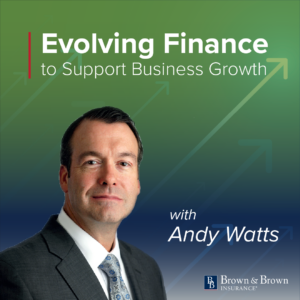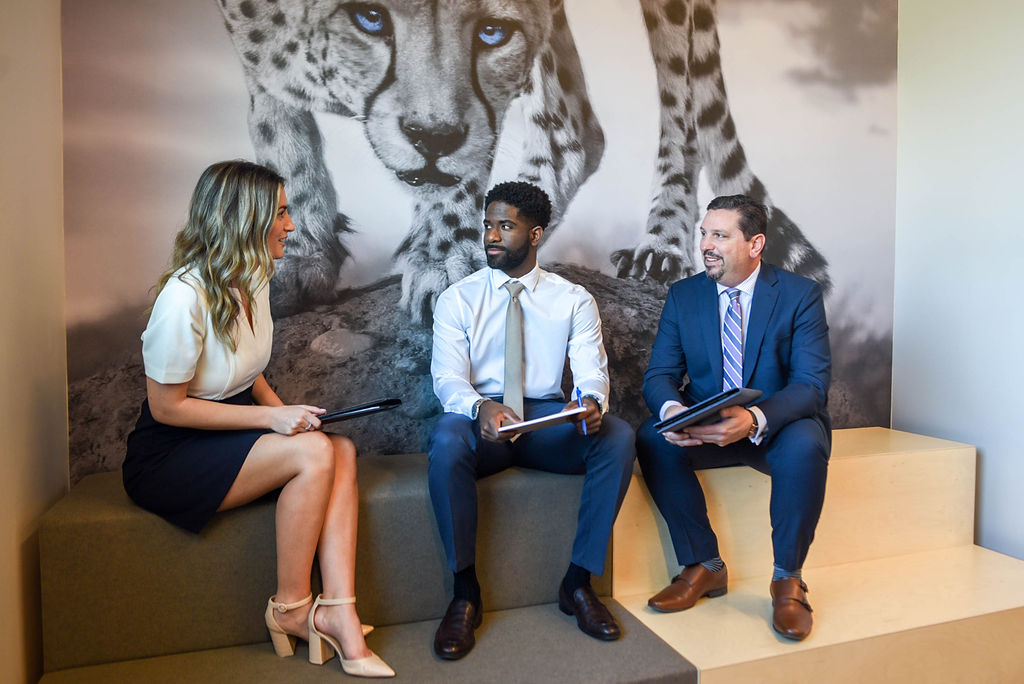ESG Reporting in a Non-Sustainable Industry: How do you do it?
by Andy Watts, Executive Vice President & Chief Financial Officer at Brown & Brown Insurance
Brown & Brown’s Chief People Officer, Julie Turpin, and Chief Financial Officer, Andy Watts, team up once again — this time to share their raison d’être for taking on ESG reporting in the insurance industry, a topic both are truly passionate about. Read on to learn how the two authors of Brown & Brown’s annual ESG report recommend similar organizations approach the ESG journey. Then, watch their short videos on the topic: Julie Turpin and Andy Watts.
Environmental, social and governance (ESG) initiatives are the latest trend in corporate America. More than 90% of S&P 500 companies now publish ESG reports, along with 70% of Russell 1000 companies.
What may have started as a vehicle to hold companies more accountable for their environmental and social impacts has transformed into a thoughtful strategic exercise of who does it better by clearly articulating the true value of ESG initiatives in the process and what it means for all stakeholders.
But what about brands or companies like ours with a less obvious relationship to sustainability? How can organizations that don’t generate massive greenhouse emissions still prioritize ESG — and do it well?
Over the last few years at Brown & Brown, we set out to do just that. Here is our 2023 ESG Report and what we’ve learned along the way.
Prioritize purpose over pressure
One of the biggest challenges for companies building and reporting on ESG strategies is remaining authentic.
There is increasing pressure all around — from the media, government, stakeholders, shareholders and customers on businesses to do their part to save the world and improve the social aspects of their company or culture.
Businesses get in reputational and legal trouble when exaggerating their ESG data or impact. This greenwashing can hurt a business’s ability to attract investors, customers and talent. It can also distract your organization from its true objectives and purpose.
At Brown & Brown, we’ve come to the conclusion: You can, and you should.
The Brown & Brown ESG journey began in 2020. We immediately realized it was just that — a journey to formalize our commitment to sustainability and our Culture of Caring rather than just a check-the-box exercise. It was important that this process be meaningful to our teammates and stakeholders and help tell our story. We accomplished this through three preliminary stages.
1. Understanding our starting position. You can’t map out a journey without knowing where you currently stand. In 2021, we established an ESG Leadership Committee to guide the organization’s strategies. This included an assessment with internal and external stakeholders to identify the factors driving our long-term business performance and societal impact.
2. Identifying our priorities. You cannot be everything to everyone. Knowing your organization’s values and “why” is the key to executing your ESG strategy. Our committee’s assessment led us to identify our highest-priority ESG topics: Diversity, Inclusion & Belonging (DIB) and Human Capital Management. As a people-focused organization, it makes sense that our greatest contribution to ESG falls within our societal impact.
This does not mean environmental and governance initiatives are unimportant to our organization. We proudly shared environmental and governance highlights in our 2023 ESG Report. For example, 87% of our offices have committed to going paperless, and we aim to have our facilities operating with a minimal greenhouse gas emission footprint.
However, our social initiatives remain the clear standout — from a 93% Great Place to Work rating from teammates to our local office support of nonprofits and the teammate-funded Brown & Brown Disaster Relief Foundation, among many more.
3. Engaging our workforce. If you have a strong organizational culture, your ESG strategies and priorities should align with employee values. Having a shared purpose creates more meaningful employee experiences and engagement. What starts with an employee survey during the planning process could lead to senior-level sponsorship and engagement of key ESG initiatives.
You’re already doing more than you think
Our ESG journey began way before our formal process was established. In fact, it was already embedded in our culture — we were doing a lot of great things in this space. We just hadn’t documented or developed a strategy around them. You likely are too. Conduct an inventory of ESG initiatives you’re already engaging. You’ll be surprised at how much is already at play.
For example, our commitment to Diversity, Inclusion & Belonging was already shaping the way we support our teams, down to the language we use — teammates versus employees — and the resources we provide.
That’s not to say we were doing Diversity, Inclusion & Belonging perfectly. Our ESG journey now provides the structure and opportunity to make improvements and set goals. But focusing on what we were already accomplishing first provided a natural prioritization and encouragement for the road ahead — and a way to document and showcase these efforts.
Here are some questions we asked to help identify our ESG starting position that may help you in your journey:
How are we actively building a more diverse and inclusive environment that empowers our teammates to be their authentic selves at work?
- Are we investing enough in our teammates’ education and development through on-demand courses or tuition assistance programs?
- Do we offer peer and/or mentorship programs to connect teammates across the organization?
- Do we encourage environmentally friendly work practices such as recycling, reuse and energy efficiency?
Championing the S in ESG
For organizations like ours, which don’t typically make the news for sustainability metrics, the S in ESG is where we shine. Our environmental outputs, for better and worse, are comparatively small as we lease most of our facilities. The true impact we can make is on our people.
This focus on Human Capital Management is where we, as CFO and Chief People Officer, have also found our most significant impact in collaboration. How do we make sure we’re listening to our team and providing the resources they need to better belong, perform, service and innovate?
For example, this could be as informal as celebrating heritage and commemorative months or as formal as our five new teammate resource groups (TRGs), each championed by two senior leaders: Black Excellence, LGBTQ+, Mental Health, The Power of She and Veterans. These regularly bring over 1,000 Brown & Brown teammates together for mentorship, education, engagement and community involvement. They provide connections for members of their communities and those who align with them, like the parent of an LGBTQ+ child seeking to better relate to their child.
The true impact of our S initiatives is immeasurable, and in a world where metrics are king, we must learn to value these stories as much as the numbers. There is strength in an organization’s ability to be vulnerable and transparent about its ESG journey.
Eventually, these stories will translate into higher teammate engagement and lower turnover rates, but when someone asks you why these initiatives are important to your organization, you may not be able to provide them with exact retention stats – but will be able to point to several metrics that have improved as a result of your efforts. You’ll tell the stories of the people and the journey that inspired them.

Evolving Finance
to Support Business Growth
with Andy Watts, Executive Vice President & Chief Financial Officer at Brown & Brown Insurance
Subscribe to Andy’s Evolving Finance monthly newsletter and view this blog on LinkedIn here.








